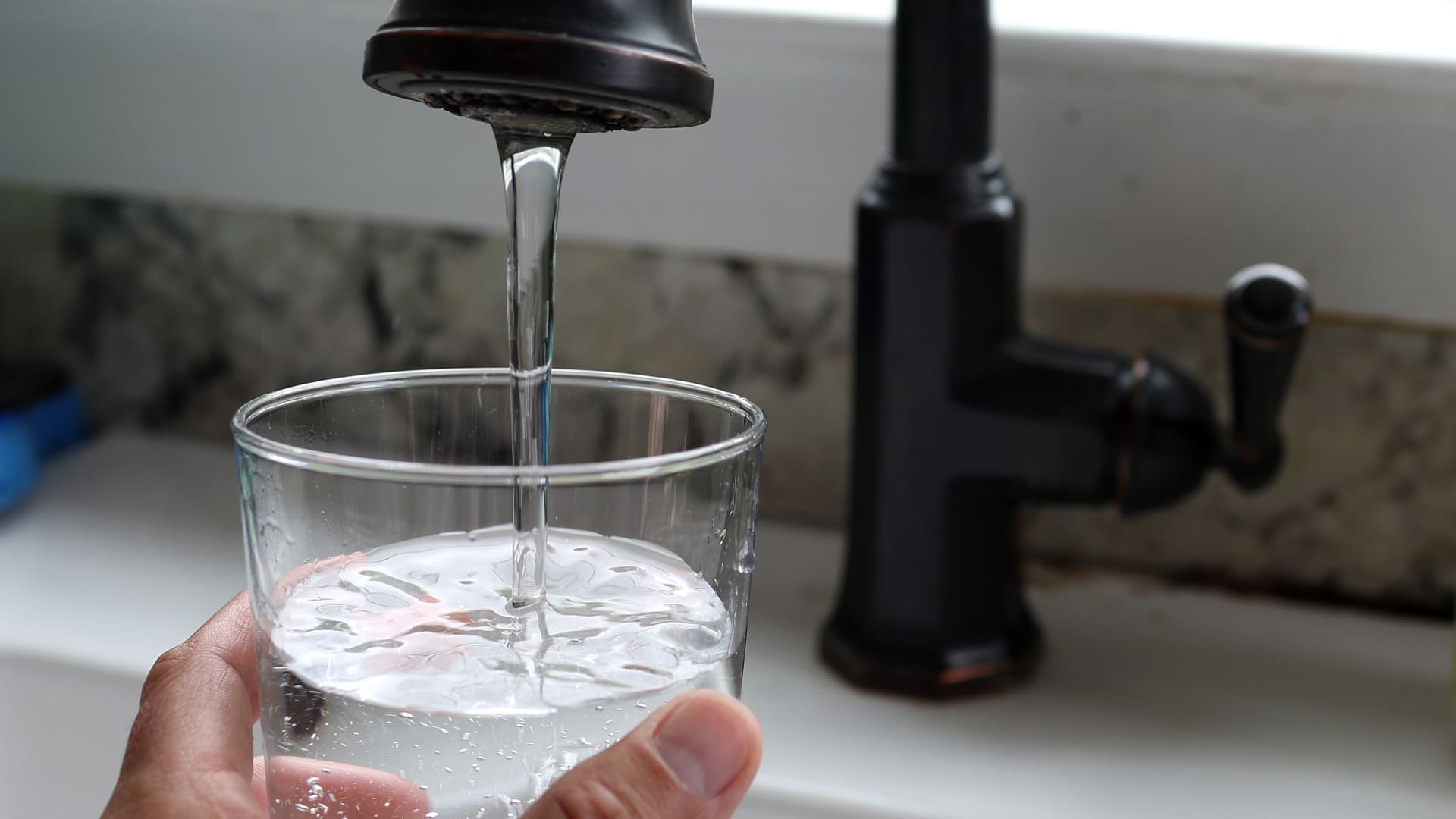
Signage is seen at the headquarters of the United States Environmental Protection Agency (EPA) in Washington, D.C., U.S., May 10, 2021.
Andrew Kelly | Reuters
The Environmental Protection Agency released long-awaited regulations Wednesday on some toxic “forever chemicals” found in drinking water.
Known as PFAS, the chemicals are perfluorinated and polyfluorinated alkyl substances. They are made by attaching two carbon molecules to fluorine, Tom Neltner explained to CNBC in 2023, when he was working as Environmental Defense Fund’s senior director of safer chemicals. The bonds are incredibly strong and take a very long time to break down, earning them the nickname “forever chemicals.”
The chemicals are helpful for many modern-day applications from weather-proofing clothing to creating nonstick pans. But over time they can leach into the environment and end up in the water supply.
At least 45% of tap water in the U.S. is known to contain PFAS, according to the U.S. Geological Survey.
Exposure to PFAS over long periods may be carcinogenic and can result in serious illnesses that decrease a person’s quality of life and even result in death, according to the EPA. Exposure during pregnancy and early childhood can also have adverse health impacts.
The EPA’s new final rule sets limits on five individual PFAS: PFOA, PFOS, PFNA, PFHxS, and HFPO-DA (also known as GenX chemicals.) The EPA also set a hazard index level for PFAS when two or more of four are mixed: PFNA, PFHxS, HFPO-DA and PFBS.
In this final rule, EPA is setting limits for five individual PFAS: PFOA, PFOS, PFNA, PFHxS, and HFPO-DA (known
as GenX Chemicals). And EPA is also setting a Hazard Index level for two or more of four PFAS as a mixture:
PFNA, PFHxS, HFPO-DA, and PFBS.
EPA
The maximum contaminant level for PFOA and PFOS chemicals in drinking water is set at 4.0 parts per trillion. PFNA, PFHxS and HFPO-DA (GenX chemicals) are limited to 10 parts per trillion. The mixtures of two or more PFNA, PFHxS, HFPO-DA and PFBS have a hazard index limit of 1.
Compliance with the rules will cost about $1.5 billion annually, according to the EPA.
Precisely who will foot the bill is still being sorted out, but it will likely be a mix of private sector and government funding, and potentially fees or taxes levied on those who access water via the public water system.
The White House has allocated $9 billion from the 2021 Bipartisan Infrastructure Law to help communities affected by PFAS pollution in their drinking water.
The law also makes another $12 billion available to make general drinking water improvements to local communities’ water supply, including PFAS contamination.
M. Susan Hardwick, president and CEO of American Water, the largest investor-owned utility, said the company will continue to prepare to comply with the new rules as well as to advocate “for funds to help mitigate compliance costs.”
American Water says it provides water and wastewater services to customers in 14 states, including 18 military bases. Hardwick said the company has been actively treating PFAS in New Jersey, Pennsylvania and California.
However, a report commissioned by the American Water Works Association estimates that compliance with the rule will cost closer to $3.8 billion annually.
The American Chemistry Council said in a press release that the rule “ignores science” and “undercuts other water priorities.”
